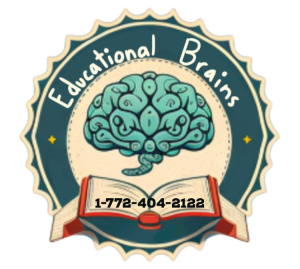The article is developed in partnership with BetterHelp
What do you picture when you hear the word therapy? Many people think of lying down on a
couch in a dimly lit, neutrally painted office while a therapist asks you questions about your
childhood. That’s largely the version we’ve seen on television and in the movies. There’s a lot
more to psychotherapy than that, however.
There are several differing approaches to psychotherapy and countless modalities within those
approaches. Perhaps the most common and well-used type of psychotherapy is cognitive
behavioral therapy, or CBT. This type of therapy aims to challenge unhelpful thoughts we tell
ourselves that lead to downturns in mental health.
CBT has inspired other common types of psychotherapy, including DBT—dialectical behavior
therapy. DBT and CBT share many traits, as this resource from BetterHelp explains, but they
are distinct in many ways.
An Overview Of CBT
Cognitive behavioral therapy is a brand of psychotherapy focused on helping clients identify
negative thoughts that can lead to unhelpful behaviors or feelings. Such negative thoughts are
usually untrue and often represent the worst-case scenario of any situation. Thus, they are
called cognitive distortions.
Under the guidance of a therapist trained in CBT, clients learn to identify these cognitive
distortions and their potential impacts on mental health. Cognitive distortions can come to us
automatically and affect our mood before we even realize it, which is why it is important to
challenge these thoughts early and effectively.
An Overview Of DBT
Dialectical behavior therapy has its roots in CBT but focuses on helping clients manage
unpleasant thoughts and emotions as they arise. Nobody lives in a world completely free of
distressing situations, and DBT can help clients take these situations in stride so they may avoid
succumbing to catastrophic thinking. While CBT aims to help clients recognize and stop
cognitive distortions at the source, DBT can give people emotional management skills should
those cognitive distortions affect their feelings.
Key Differences Between CBT and DBT
Many people who seek therapy receive both CBT and DBT—sometimes in the same session.
Therapists often tailor interventions based on the needs of individual clients, and many benefit from numerous therapeutic modalities. Nevertheless, knowing where CBT ends, DBT begins,
and vice versa can be helpful.
CBT And DBT Treat Different Mental Illnesses
CBT is often a first-line therapeutic intervention for some of the most common mental health
conditions: anxiety disorder, depression, and substance use disorder, to name three. It can also
treat physical health conditions like fibromyalgia, irritable bowel syndrome, and myalgic
encephalomyelitis/chronic fatigue syndrome.
Many therapists certainly use DBT to treat some of the same conditions targeted by CBT.
However, DBT was originally developed to help people living with borderline personality
disorder, post-traumatic stress disorder, eating disorders, and suicidal thoughts.
If you are having thoughts of suicide, there is help available 24/7. Call or text 988 from your
phone or visit the organization’s website to chat with dedicated volunteers.
DBT Incorporates Mindfulness Practices
CBT, relative to DBT, focuses more on cognitive distortions, which are the root thoughts that
often cause unpleasant feelings and unhelpful behaviors. DBT specifically targets the feelings
and emotions that often result from cognitive distortions. One strategy for managing strong
emotions is mindfulness.
Mindfulness is the practice of grounding yourself in the moment when strong thoughts and
feelings threaten to put you in a negative head space. One of the most popular mindfulness exercises is meditation. Someone in a CBT program might learn about mindfulness and its
potential benefits, but it is less of a focus than it is in DBT.
DBT Often Involves Group Therapy
People usually receive CBT in one-on-one sessions with their therapist. DBT is also often
delivered in individual sessions, but many people participate in group sessions to further hone
their emotional management skills. There is also more of a focus in DBT on improving social
skills and interpersonal relationships, which may necessitate contact with other clients facing
similar challenges.
















